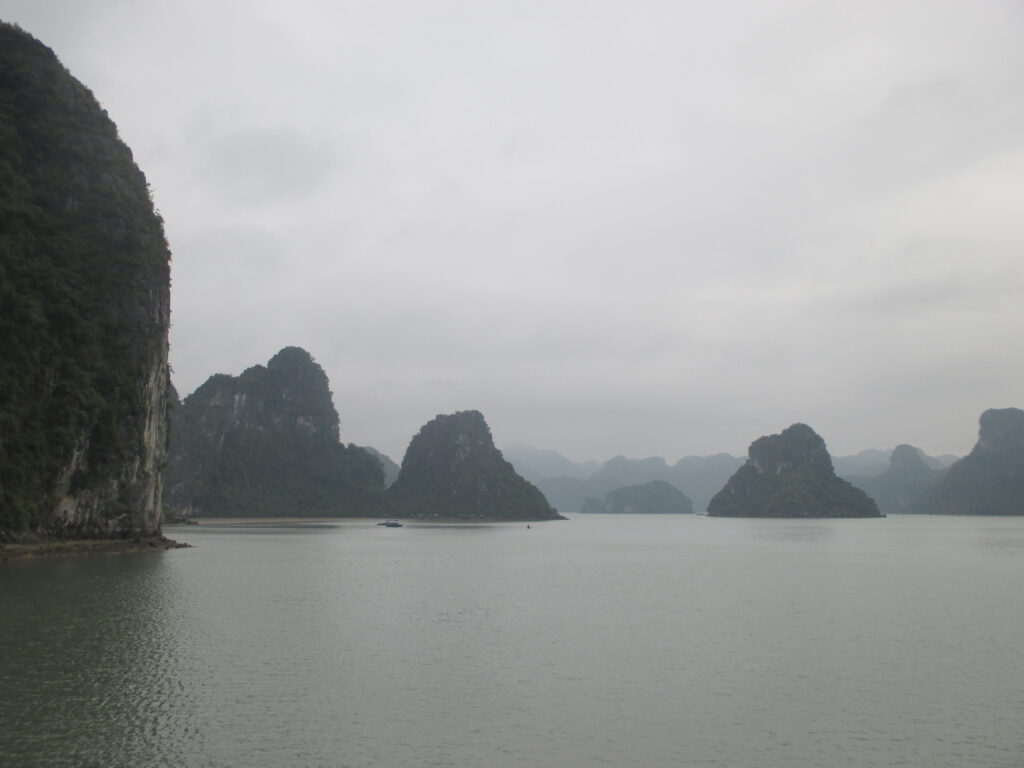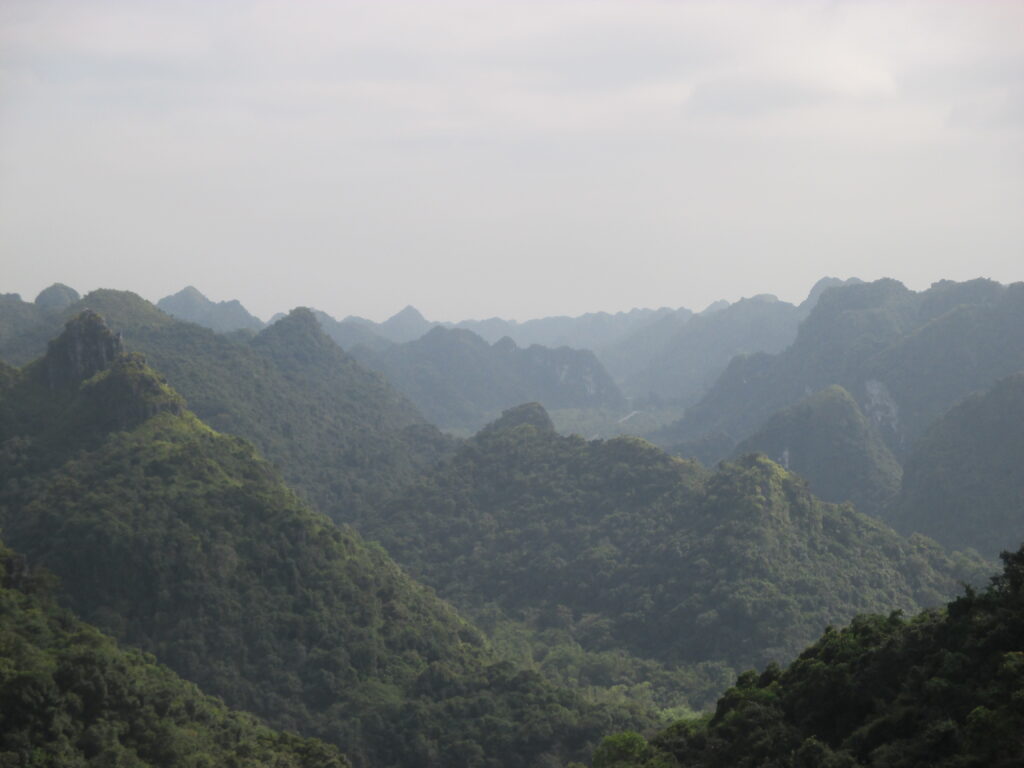Backpacking In Vietnam
So much to see
I really enjoyed my time in Vietnam. It has a beautiful and diverse landscape. There are busy cities, a very lengthy coastline, mountains, beautiful islands, and the world’s largest caves. It also has great cuisine and friendly people. The country has a complex history, with many exhibitions displaying its past, yet I sense pride in how the Vietnamese remember it.
I discovered that Vietnam, though narrow, expands far from South to North next to the South China Sea. We travelled sole by bus, with many long journeys, including several night buses (which were relatively comfortable) to maximise the days for exploration. There are other quicker forms of transport, including a few trainlines, and internal flights – but we were weary of our carbon footprint… and on a low budget.
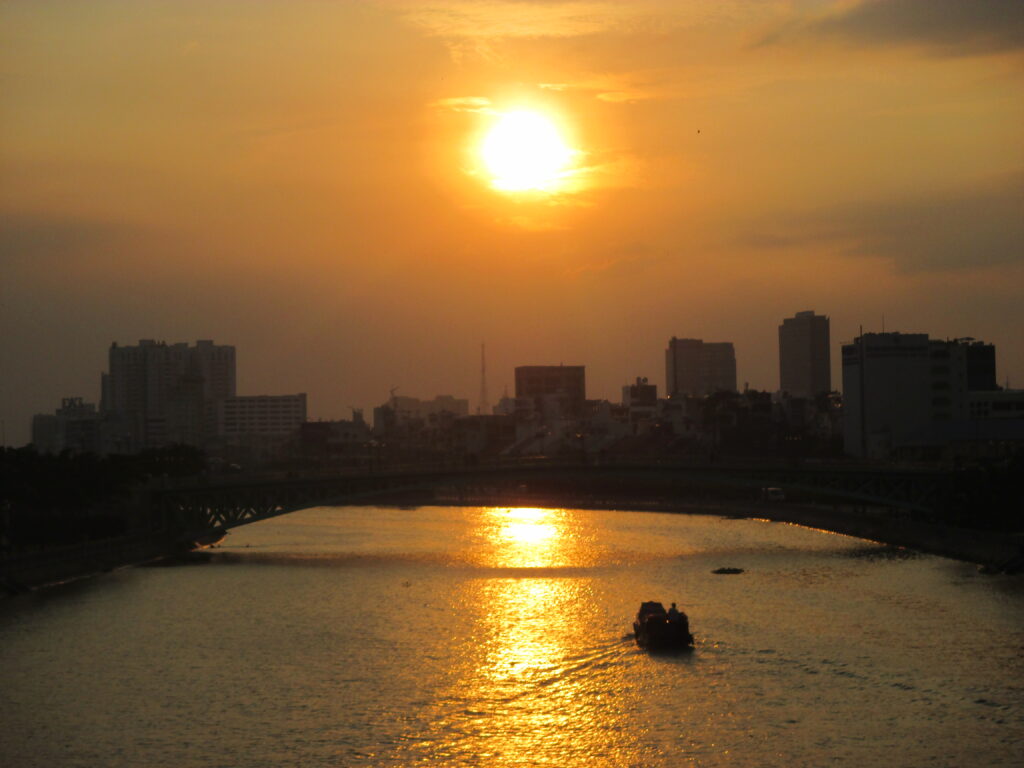
Ho Chi Minh City
The first stop on this whirlwind tour was Ho Chi Minh City – formerly Saigon – in the South of the country. It is a busy, brightly lit, commercial hub of activity. I thought it stuck out from the rest of the country, with many Western brands found in the city. There are plenty of shopping centres, endless traffic – consisting largely of motorbikes, and loud-music coming from late-night bars. Despite less than one in ten Vietnamese are Christians, the Christmas decorations were out in force.
To experience the more traditional areas of Saigon – as the residents still refer to it – I hear it is best to explore the outer districts of the city.
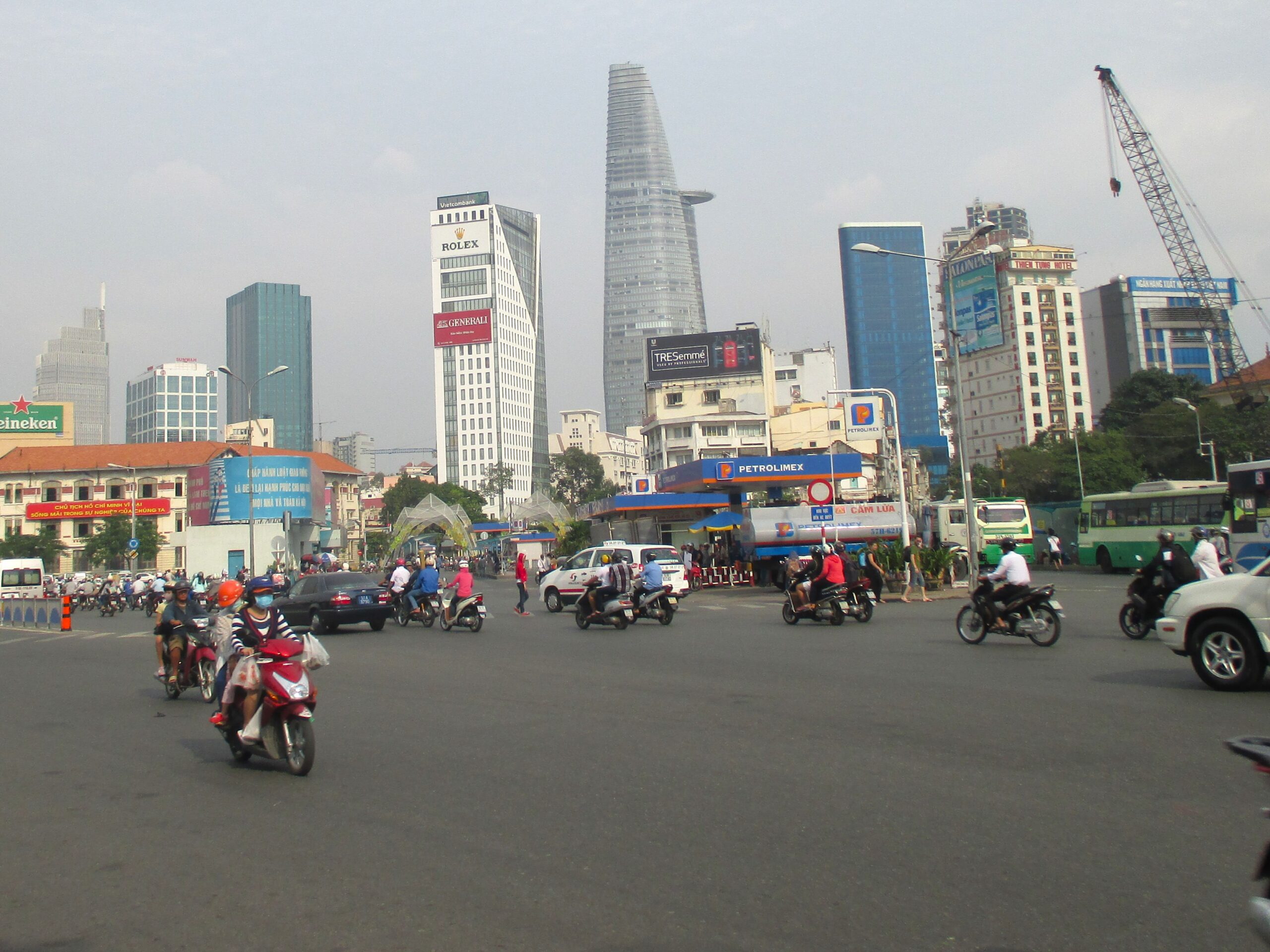
The history
Behind the noise, the War Remnants Museum tells the story of the wars against the French colonial power, as well as the war with the United States of America. There are graphic and horrifying displays of those wars, which the curators have labelled as genocide. Given what I saw at the museum, it is understandable why the Vietnamese feel so strongly about what happened during the years of foreign invasions and occupations.
Just outside of the city, there are two more history-themed exhibitions – tunnels that were used by the Viet Cong during the US conflict. These are remarkable illustrations of the struggles the Vietnamese went through to resist and eventually repel the aggressors, in fight to rule their own lands.
Floating market
The next destination, Can Tho, approximately three hours southwest of Ho Chi Minh City, is famed for its floating markets on the river. We were taken on a guided boat tour of the market, starting at sunrise, to witness the drama unfold.
From dawn, the locals bring their goods out on their boats, as they trade above water – all while navigating aquatic traffic, other boat merchants, and passing vessels such as ours. The tour took us round to a quieter area of the riverside, too. We disembarked at a café for breakfast, but only after we had to wait for ridiculously cute flock of ducks to pass by.
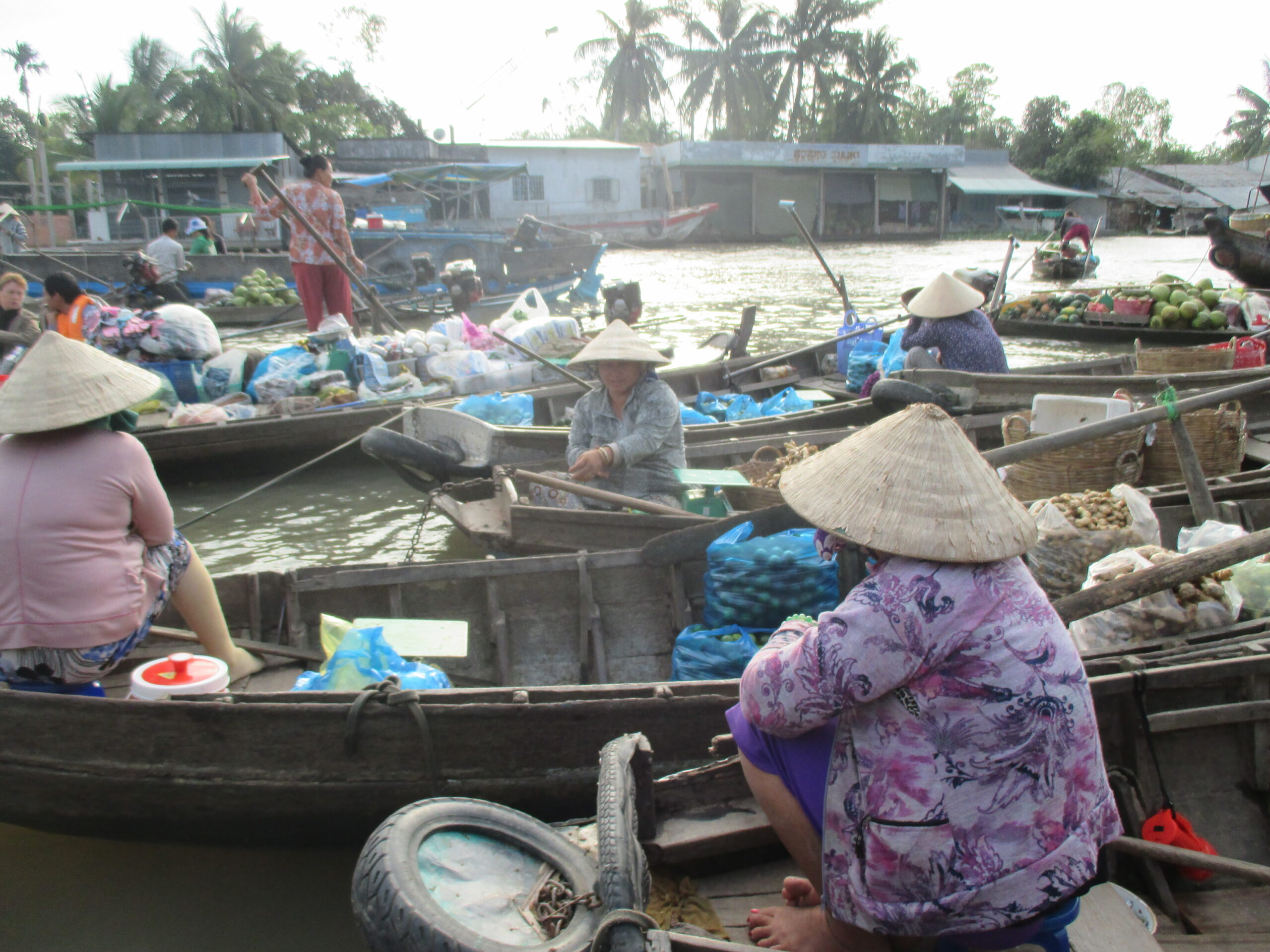
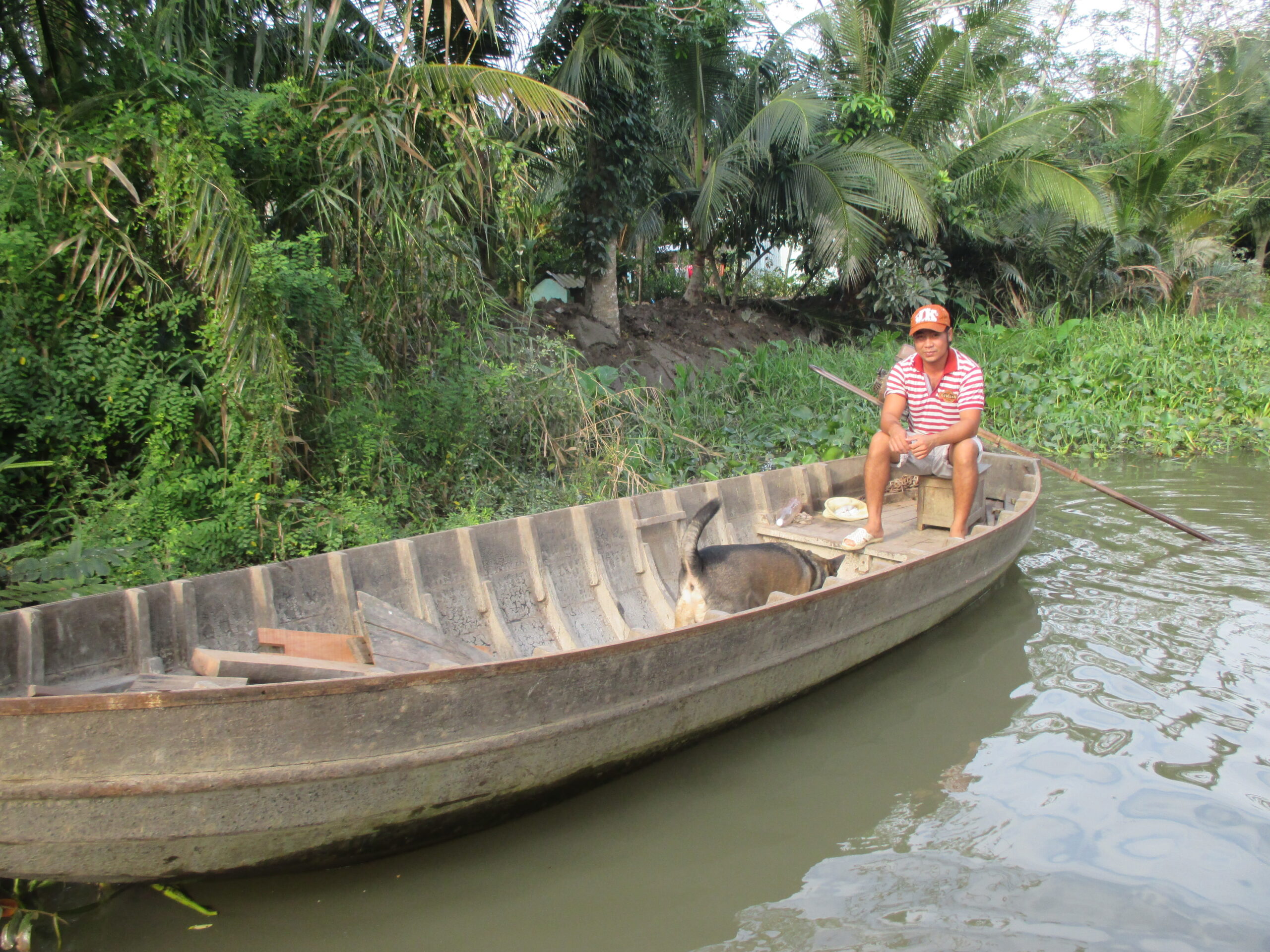
Mui Ne
From Can Tho, via a bus back to Ho Chi Minh City, we took another bus to the coast – at Mui Ne. This small sea-side town was popular with Russians, so much so some of the signs were written in Russian. It is also a well-known destination for windsurfers, that dominated the skyline from the beach.
We hired a motorbike from town to see the main attraction; the Red Sand Dunes. Vast mounds of striking orange sand (not red, as the name suggest) are set above the adjacent sea. As the sun started to lower on the horizon, it brought out the colours very powerfully. The dunes are steep in places, giving the impression of being surrounded by them, so much so I felt I could be in the middle of a desert.

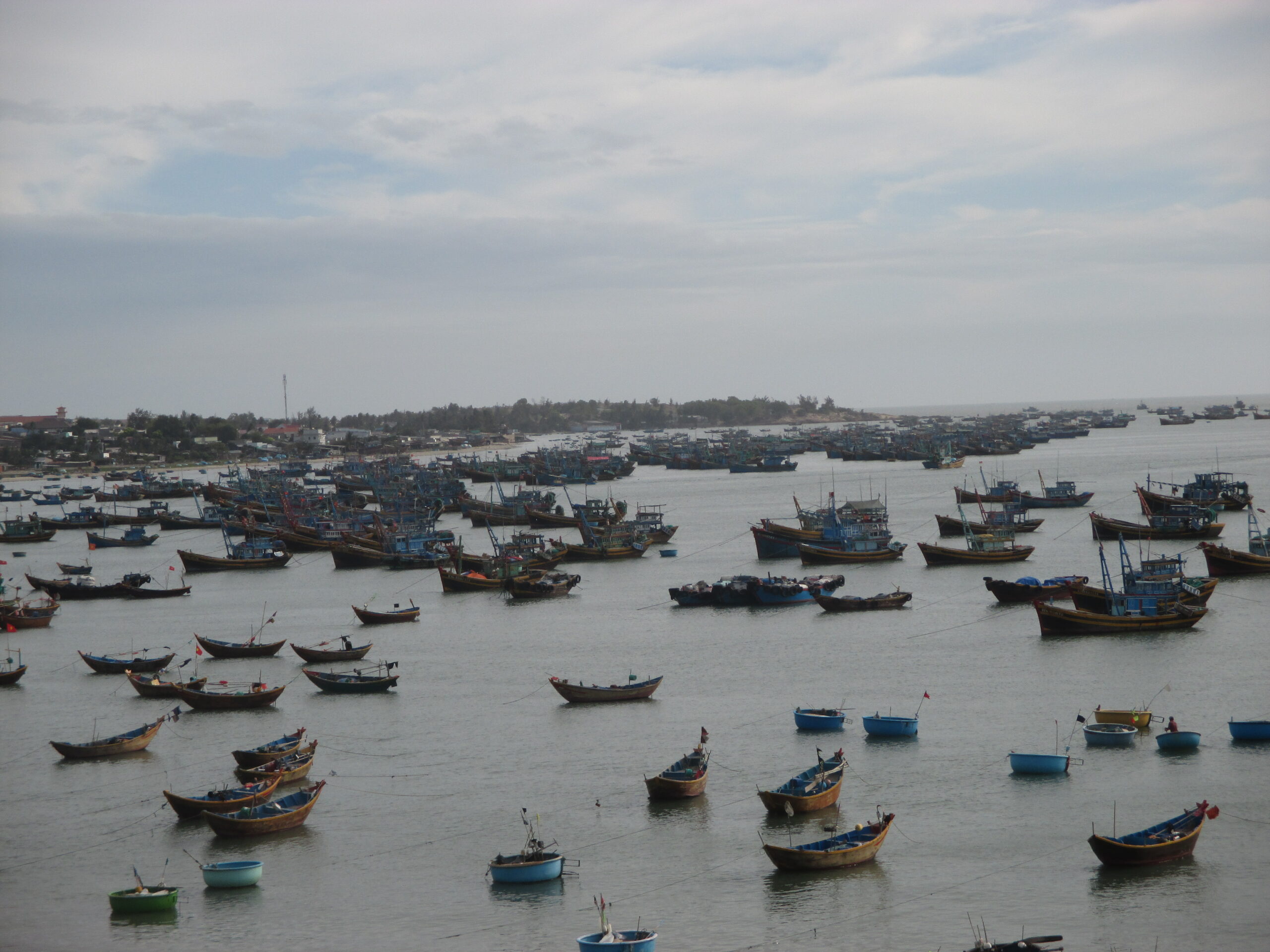
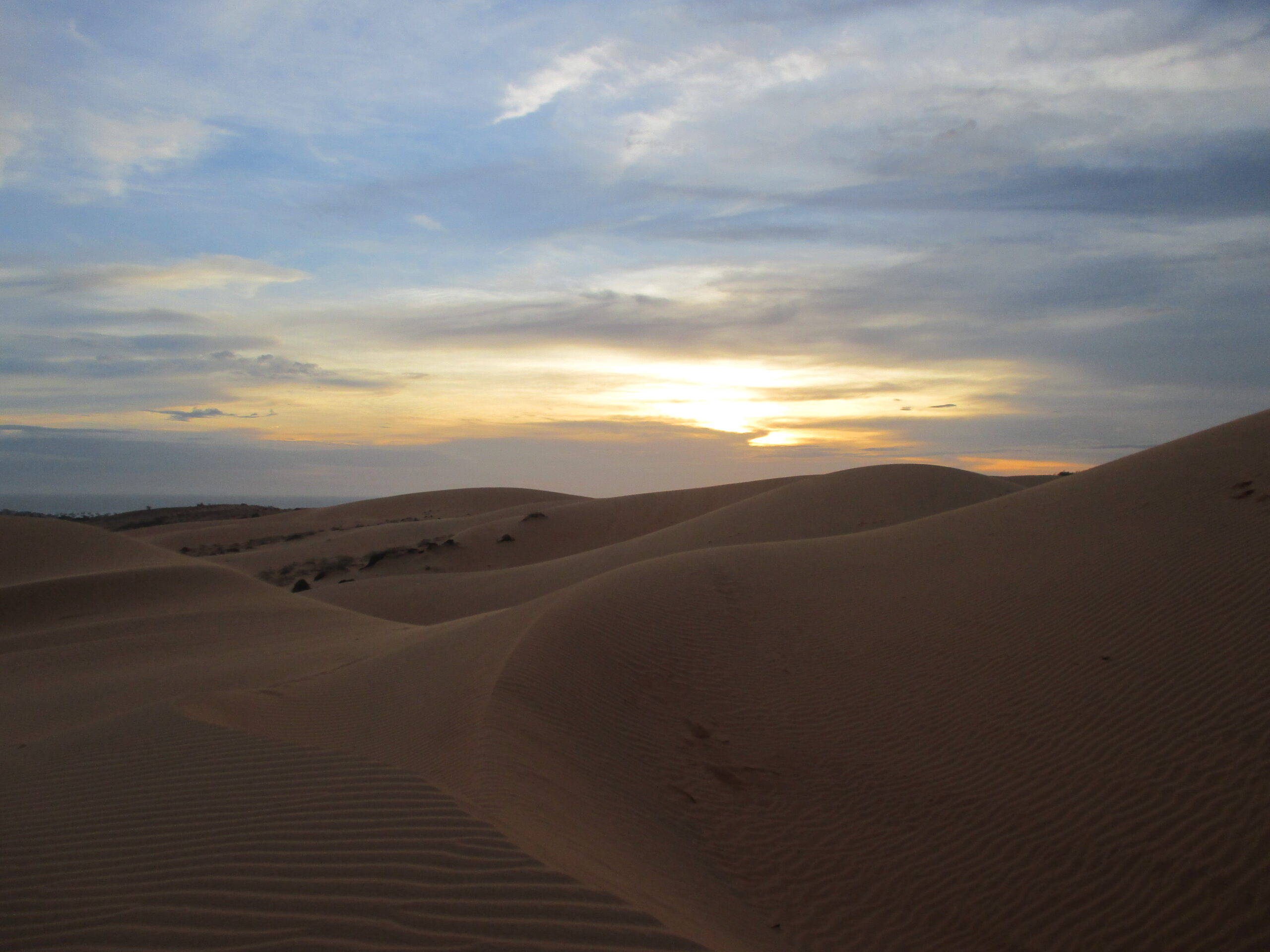
Da Lat
The next stop was further inland, to the colonial town of Da Lat, in the Central Highlands. Vietnam is popular with motorcyclists because of the roads like this one, that pass hills and mountains, forests and large lakes. Da Lat was built by the French as a resort town and it still had that feel when wandering the streets. The most memorable part of the stay here, for me, was finding a café that sold the best desserts I had in Southeast Asia.
Throughout this Southeast Asia tour, especially in Vietnam, the food was delicious. There was a mixture of rice and noodle dishes, soups, meat or vegetarian options. Da Lat was the first time I indulged in the local sweet dishes; a mixture of rice, coconut, and cream-based desserts. As they were mini, I had to try several – and each was very tasty.

Hoi An and Hue
Feeling well fed; we had the longest bus journey of the trip to come. Two connecting buses over a total of more than 18 hours took us up the coast. We skipped the popular tourist resorts of Nha Trang, Quy Nhon and Da Nang, to the ancient city of Hoi An. Hoi An is a myriad of narrow streets, canals, and colourful architecture of varying influences – including the Japanese Bridge and Pagoda. Simply wandering around town is entertaining, navigating the streets and waterways.
It is a relatively short bus ride north to Hue – a larger city – the former colonial capital. Here, you can take a boat ride over the river to the stone-walled Citadel which marks the Forbidden City (also referred to as a palace). There is a cluster of impressive ancient buildings, surrounded by a defensive moat, including mausoleums and a tall pagoda. Unfortunately, on our visit grey skies, light rain and scaffolding detracted from what is usually a bright exhibition of Hue’s dynastic history.
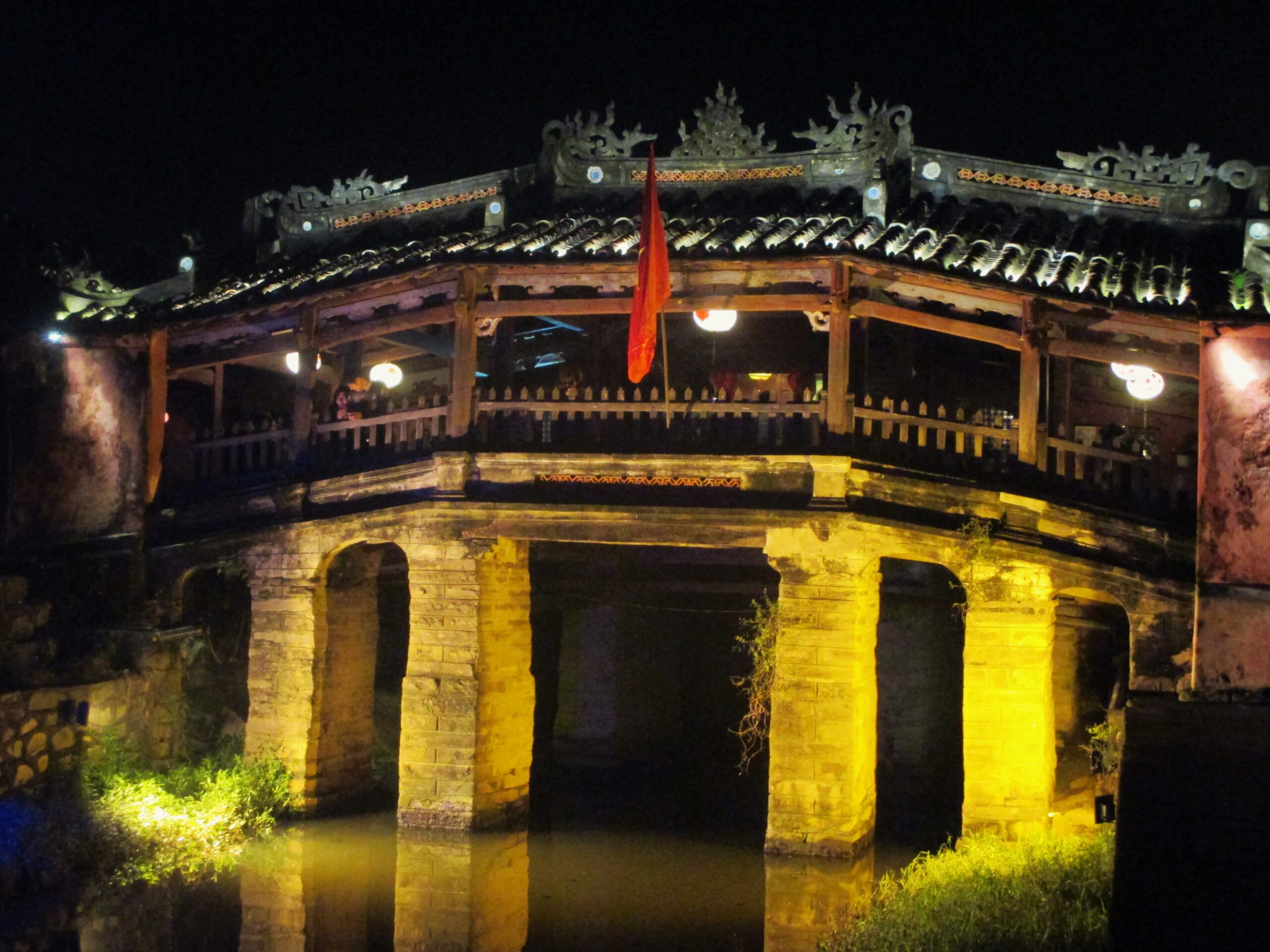
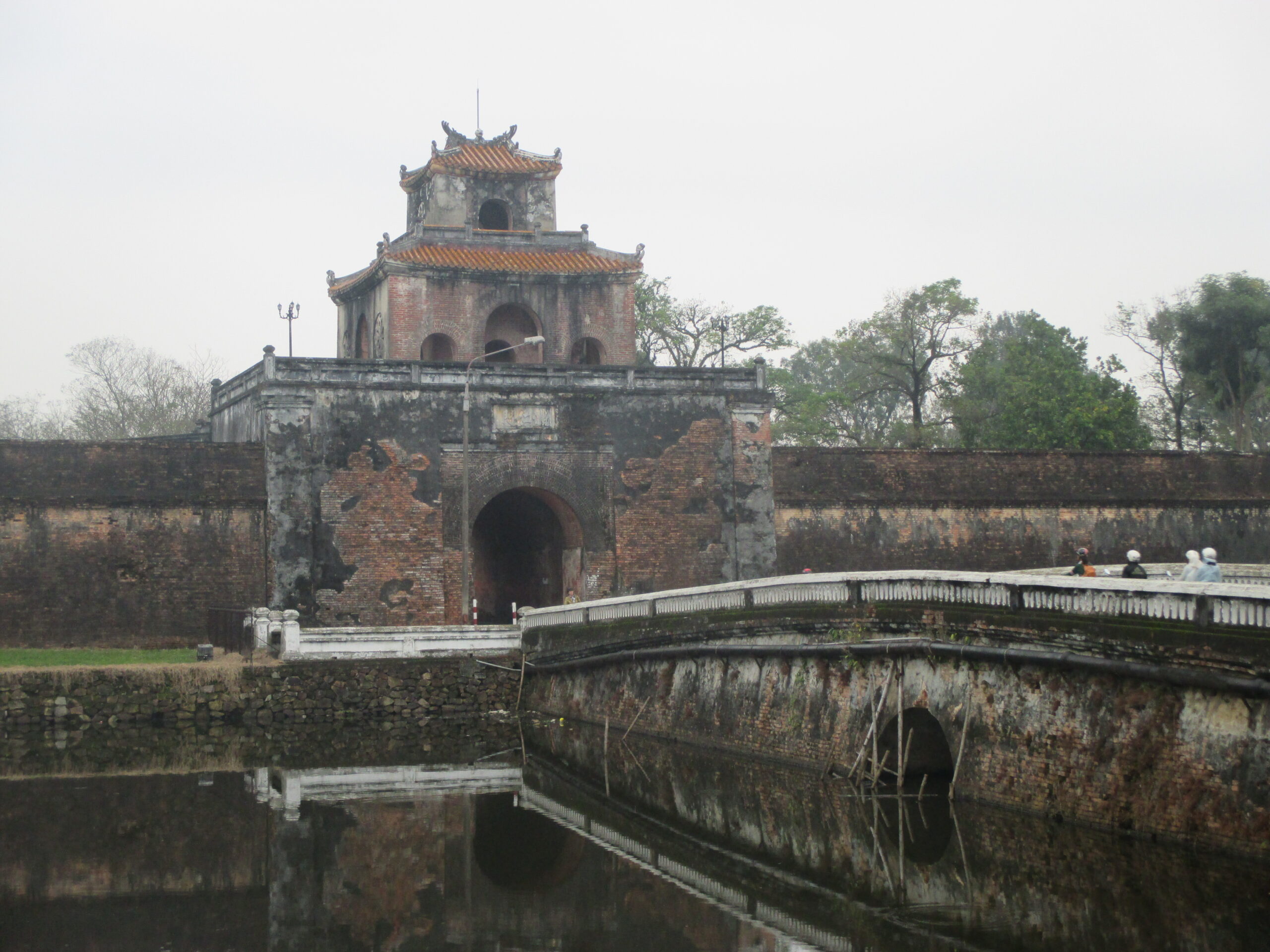
Phong Nha
Heading further north still, making inroads again, we stopped at the least developed part of Vietnam on this tour – at Phong Nha, the entrance of Phong Nha – Ke Bang National Park. Here is a remarkable display of Vietnam’s nature. The area is known for the largest caves in the world – one of which was only recently discovered, beating the previous record of another cave nearby.
We took a tour on a long-tail boat, along the river, to one of the caves. The entrance was accessed via the water that runs underneath the limestone wall to a cavern. The spectacular formations inside adds to the grandiosity of the caves. The lights illuminate the wondrous shapes on the walls and ceilings, making me feel as if in an underground world.
The surrounding area in the national park is beautiful, too. Lush, green forests over hills and mountains. While touring on another rented motorbike, we had a sighting of rare Vietnamese wildlife – a dark-coloured langur running into the trees. There were barely any others on the road, making this a tranquil spot to appreciate nature.

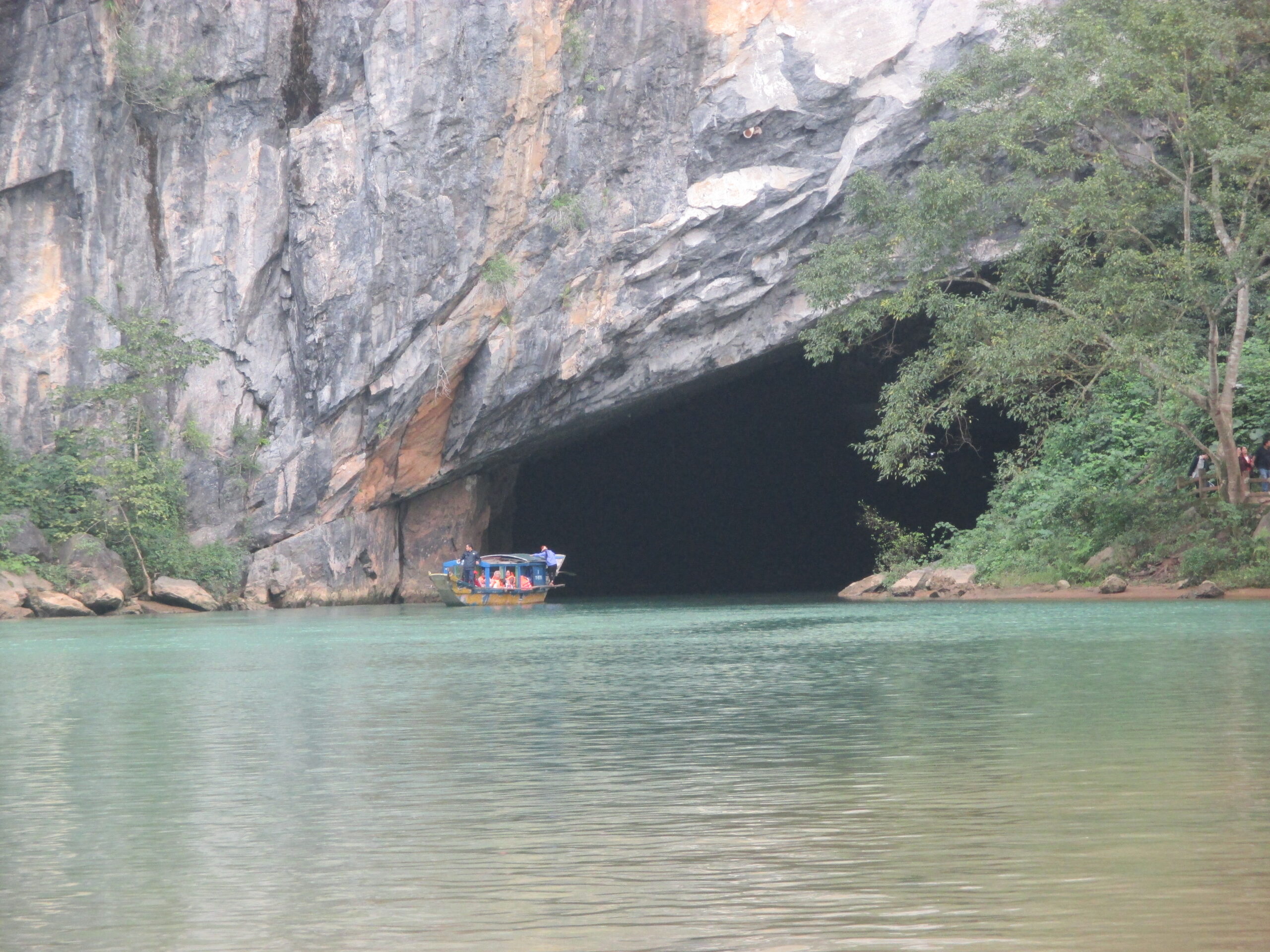
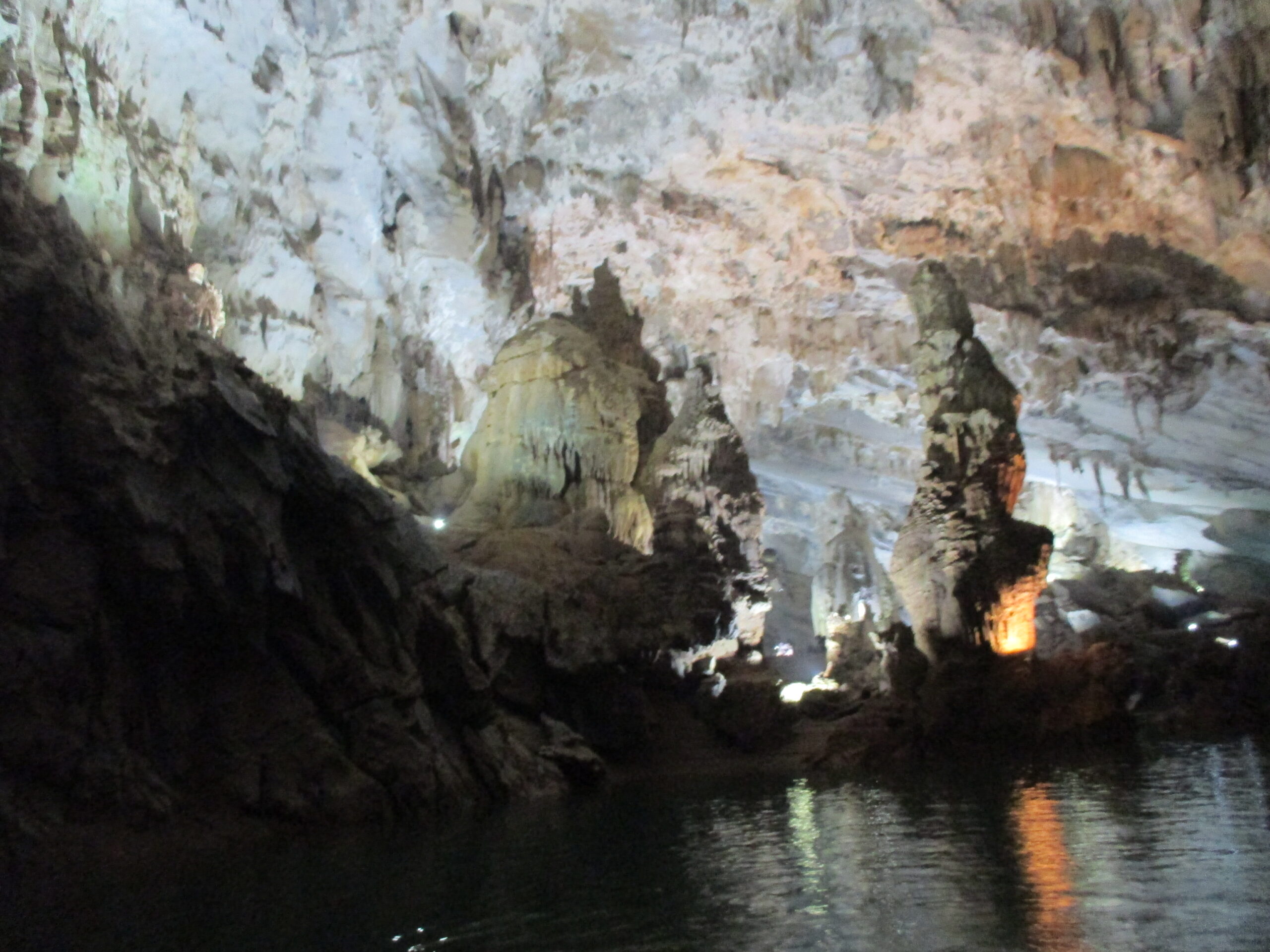
Hanoi
The penultimate stop was the capital, the largest city in the north, Hanoi. We arrived early in the morning, after another gruelling overnight bus trip. Feeling in a daze from the lack of sleep, Hanoi had a very different feel to Ho Chi Minh. In part, because in January the temperature was much cooler in the north, and that morning was cold. There was a slight mist over the city, which gave the streets an eery feel, as we walked sleepily to the guesthouse.
Hanoi also felt less influenced by Western culture – perhaps because of the history – it had far fewer Western brands and bright lights. A large, still lake sits in the city centre as relentless traffic circles around it, onto the connecting roads darting out in almost every direction. We spent two days wandering the city, admiring the architecture, and continued to be impressed by the Vietnamese cuisine.
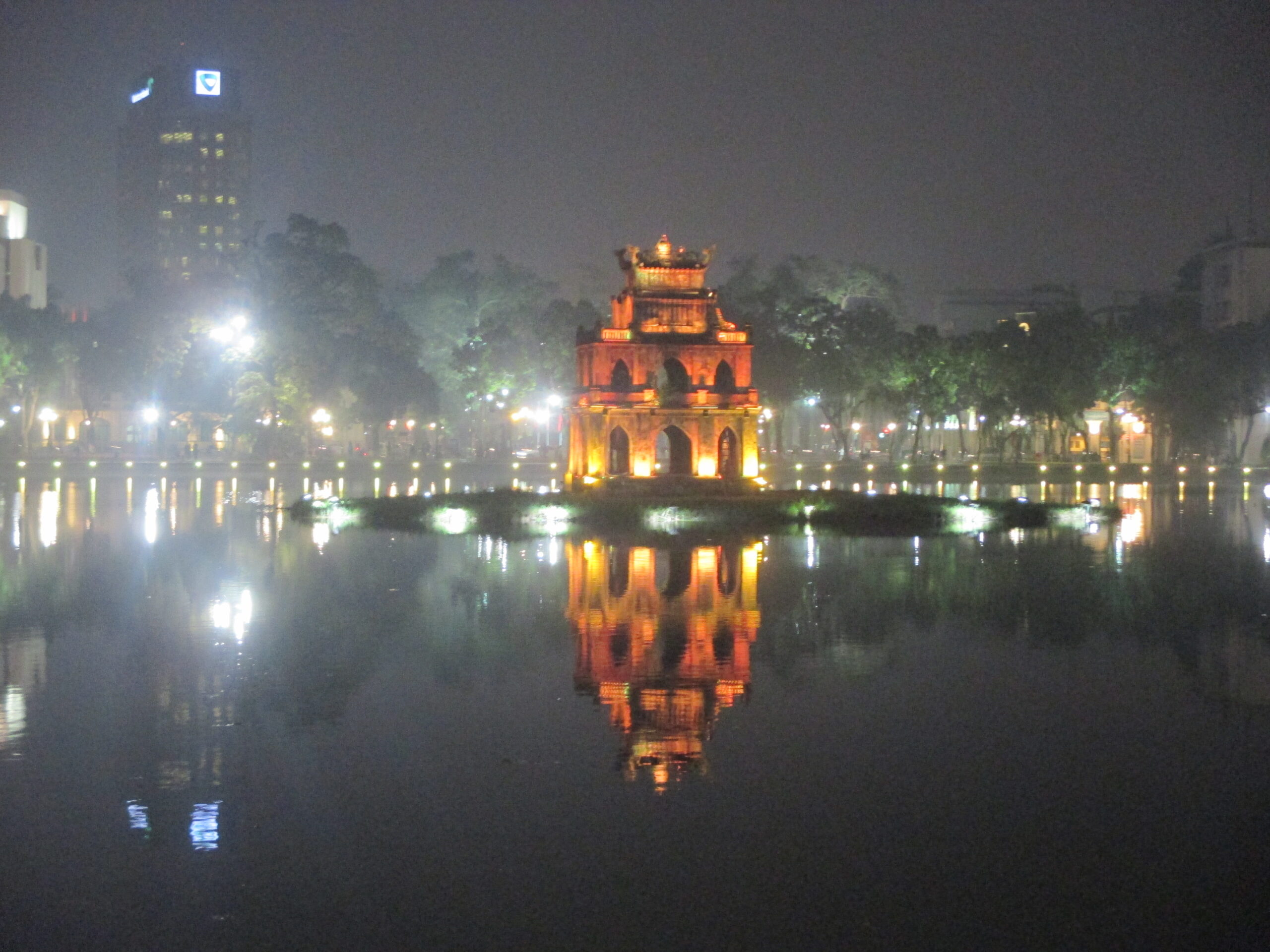
Ha Long Bay
From the capital we headed east to Ha Long Bay. This area is famous for boat trips around the bay, including overnight stays, amongst the limestone islands that stand tall out of the water. We arranged to stay on one of the islands – the largest – Cat Ba. The island has an extensive coastline of beaches and cliffs, as well as a significant amount of woodland in the interior. The large hotels developed by the port front were near abandoned on our stay, which may have been due to the cold weather. Scattered around the island are small farms, worked tireless by man and ox.
The real draw for me was Cat Ba National Park – home to the endangered endemic Cat Ba Langur. Sadly, we didn’t encounter a monkey on a hike into the viewpoint. The jaunt was enjoyable, nonetheless. It was very quiet, allowing us a peaceful trip into the forest and back.
Returning across the bay by ferry, we had to travel via back through Hanoi to the western border with Laos – another extended bus ride – on the leg of our tour of Southeast Asia.

